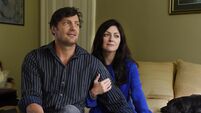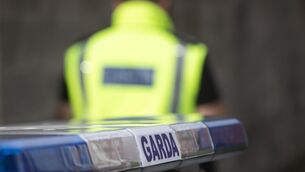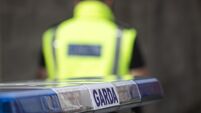Car near murder scene may have been O’Reilly’s
An examination of the images provides “moderate support” to claims that the car was the same type as driven by Joe O’Reilly.
British forensic video expert Andrew Laws told the Central Criminal Court yesterday he could not conclude the vehicle, seen passing Murphy’s Quarry in north Dublin on October 4, 2004, was not O’Reilly’s.
Mr Laws, chief executive of Kalagate Imaging Bureau which is based in Cambridgeshire, said he had been asked to analyse CCTV footage of a car twice seen passing Murphy’s Quarry between 9am and 10am that day.
The trial heard earlier this week that gardaí believe the vehicle seen passing the site was O’Reilly’s Fiat Marea estate.
The 35-year-old father-of-two has pleaded not guilty to the charge of murdering his wife at the couple’s home at Lambay View, Baldarragh, The Naul, Co Dublin.
Mr Laws explained that he compared images of the vehicle seen near Murphy’s Quarry with other CCTV footage taken from the same site during an re-enactment carried out by gardaí with O’Reilly’s car.
He described the overall quality of the images captured on the date of the murder as “fair”.
He stressed his findings were limited. Parts of the vehicle were obscured as it had been recorded passing the entrance to Murphy’s Quarry. The different position of the sun and position of the cars on the road also made comparisons difficult with the footage from the reenactments.
However, Mr Laws said he was unable to find a significant difference between the vehicles but did not rule out the possibility that they were different cars. “From the general shape of the vehicles, there is an overall similarity,” he said.
Despite the poor quality of the tapes for comparative purposes, he said it would be obvious to everyone if they were different types of vehicle.
O’Reilly’s car had a dent on the driver’s door, but Mr Laws said the footage was not clear enough to see such a level of detail.
He said the image of the vehicle seen outside Murphy’s Quarry on October 4 was consistent with it having a roof rack. However, he admitted he would have been unable to say if the car had a roof rack if he had not been told of this.
He concluded there was a moderate level of support that O’Reilly’s car and that seen at Murphy’s Quarry on October 4, 2004 were the same make and model.
He acknowledged that another expert might conclude there was only limited support for such a finding as it was a subjective type of analysis.
Mr Laws said there was a scale in such findings, from no support to limited support as far as strong and powerful support.
He could not discount the possibility that the car seen at Murphy’s Quarry was a different model that looked like a Fiat Marea.
Mr Laws also compared the images from the morning of October 4, 2004 with other CCTV footage from Murphy’s Quarry of O’Reilly’s car returning home that afternoon.
He claimed the second image was not strong enough to state that they were the same vehicle. However, he equally could not say they weren’t.
Another comparison was made with CCTV images of a car, believed to be O’Reilly’s, caught on camera at Blake’s Cross on the same day and the accused’s actual Fiat Marea.
Mr Laws said the colour of the vehicles was similar and “bluish in appearance”, but he could not say definitively they were the same colour.
He concluded that there was strong support that the car captured on CCTV at Blake’s Cross was a Fiat Marea estate car.
Mr Laws said he could not go further and state that they were the same vehicle. But if it was not a Fiat Marea, it would have to bear a striking resemblance to such a model.
Under cross-examination by O’Reilly’s barrister Patrick Gageby SC, Mr Laws agreed there were other types of estate vehicle similar in size and shape to a Fiat Marea. He accepted such models could look indistinguishable from a Fiat Marea on CCTV footage.
Meanwhile, trial judge Mr Justice Barry White repeated a warning to the jury that they should not discuss the case with anyone.
It followed concern expressed by prosecution and defence barristers that jurors were gathering outside the courtroom each morning alongside members of the public waiting to attend the hearing.
Mr Justice White said the case had attracted considerable interest, which resulted in people queuing from as early as 9am for over two hours to get “front row seats”.
The judge told the jury they had no reason to be afraid or uneasy about his warning.
He said members of the public might inadvertently approach them to seek their views on the case or express their own opinions without realising they were members of the jury.
The trial resumes today at 10.30am.











